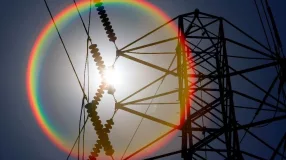NASA’s Cassini mission has come to an end. After 13 years and a 270 million mile trip, the school bus-sized spacecraft ends its voyage with a noble crash into Saturn’s atmosphere, collecting many insights important to understanding our solar system along the way. One fascinating discovery is that Saturn's moon, Titan, has several hundred lakes of what is essentially liquid natural gas. Many of these lakes by themselves have more oil and gas, flowing freely as liquids due to temperatures around -290 F, than all of Earth’s reserves combined.
Not to worry though – we have enough proven reserves in the United States alone to last 135 years. While the world will look far different then than it does now, natural gas provides us the comfort and security to venture onward, discover new solutions, and lead us to a sustainable future. Already, clean natural gas serves as a modern complement to growing renewable technology, and the natural gas industry continues to innovate – whether it is natural gas from landfills or “carbon capture technology” to sequester emissions from burning natural gas – to make sure we have energy sources and infrastructure that lasts.
We still don’t know how those hydrocarbon lakes on Saturn got there in the first place, along with the many mysteries of space we still haven’t answered. But whether its on Saturn or on Earth, human ingenuity hasn’t failed us yet.
Almost every rocket NASA has launched was fueled from hydrogen in part extracted from natural gas; both literally and figuratively, natural gas boldly powers us to go where no fuel has taken us before.






